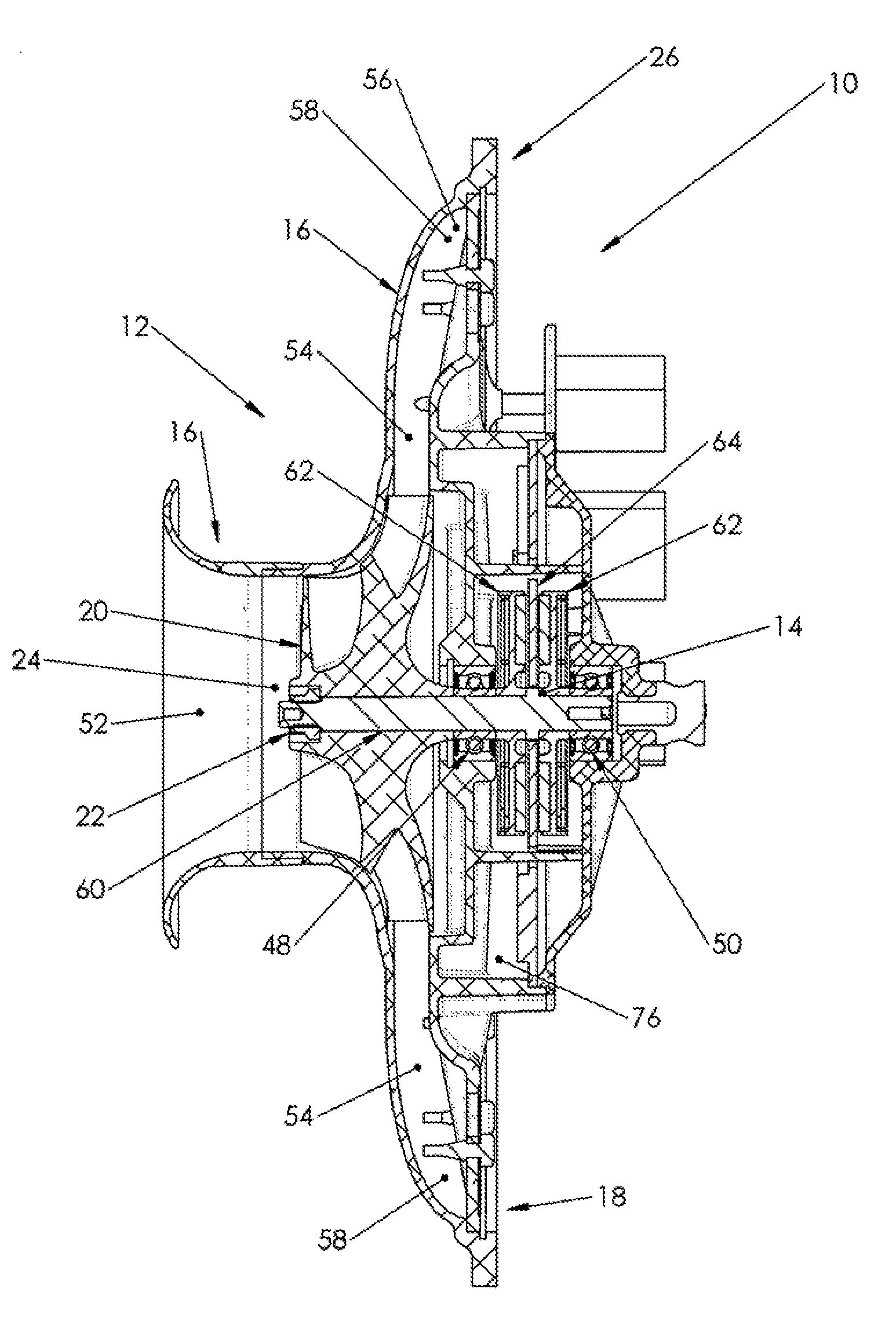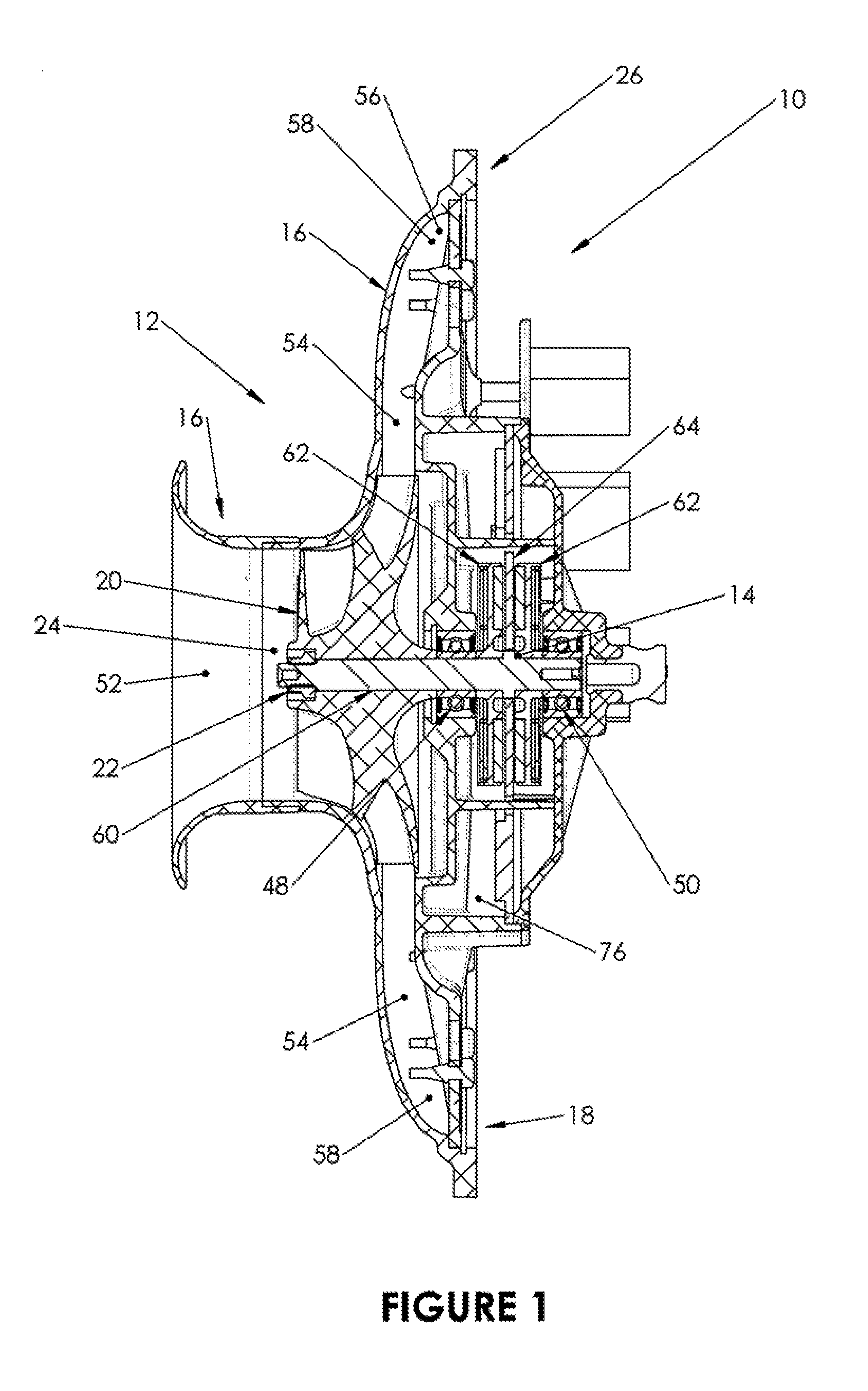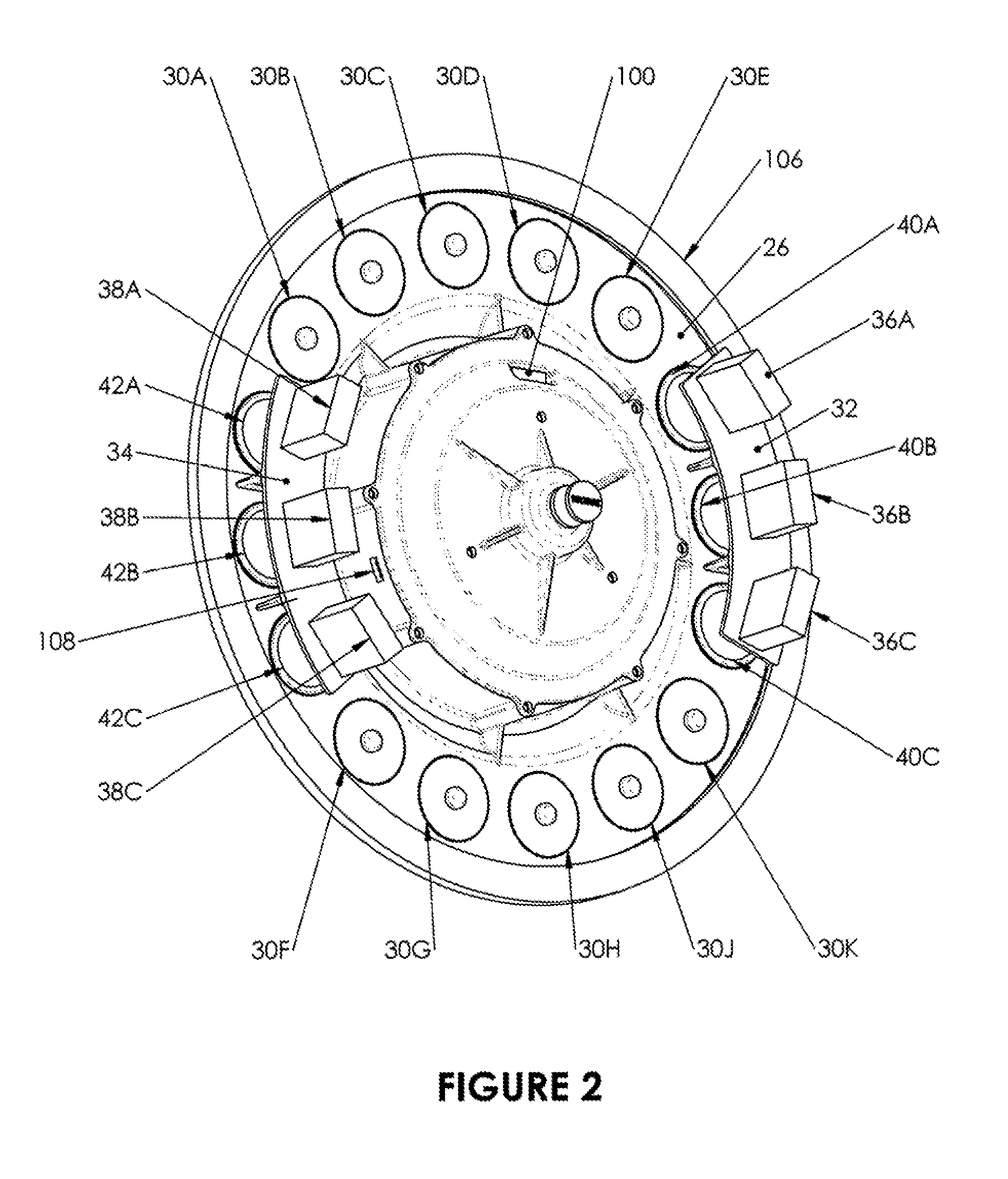Air Pumping Device
a technology of air pumping device and air pumping chamber, which is applied in the direction of piston pump, positive displacement liquid engine, liquid fuel engine, etc., can solve the problems of non-linear flow across the surface, inability to control the amount of static lift, and inability to control the rate of ascent or descent, etc., to achieve high operating efficiency and power density
- Summary
- Abstract
- Description
- Claims
- Application Information
AI Technical Summary
Benefits of technology
Problems solved by technology
Method used
Image
Examples
Embodiment Construction
[0029]The present invention will now be described more fully hereinafter with reference to the accompanying drawings, in which preferred embodiments of the invention are shown. The invention may, however, may be embodied in many different forms and should not be construed as being limited to the embodiments set forth herein. Rather these embodiments are provided so that this disclosure will be thorough and complete, and will fully convey the scope of the invention to those skilled in the art. Like numbers refer to like elements throughout.
[0030]With reference to FIGS. 1-3, a first embodiment 10 of an air pumping device suitable for the buoyancy control of lighter-than-air craft is shown. The first embodiment 10 of the air pumping device features a centrifugal compressor assembly 12 and an axial gap motor 14 of axial gap, DC design, wherein both the centrifugal compressor assembly 12 and the axial gap motor 14 utilize a common shaft 60. The first embodiment 10 of the air pumping devi...
PUM
 Login to View More
Login to View More Abstract
Description
Claims
Application Information
 Login to View More
Login to View More - R&D
- Intellectual Property
- Life Sciences
- Materials
- Tech Scout
- Unparalleled Data Quality
- Higher Quality Content
- 60% Fewer Hallucinations
Browse by: Latest US Patents, China's latest patents, Technical Efficacy Thesaurus, Application Domain, Technology Topic, Popular Technical Reports.
© 2025 PatSnap. All rights reserved.Legal|Privacy policy|Modern Slavery Act Transparency Statement|Sitemap|About US| Contact US: help@patsnap.com



